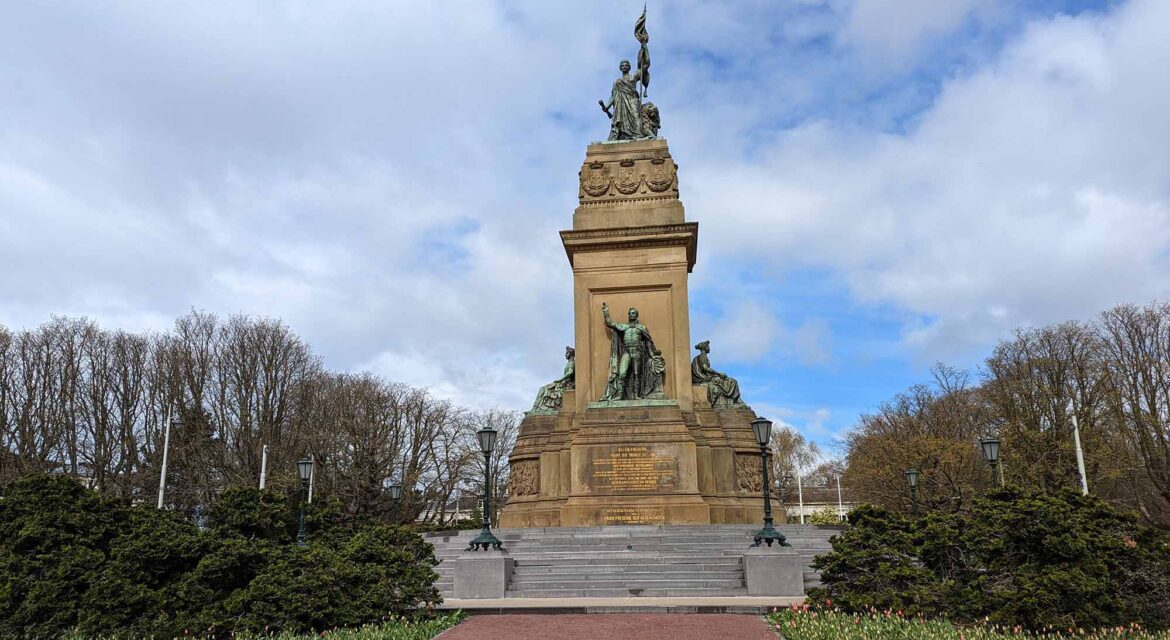 Plein 1813 is a square in The Hague that houses the Independence Monument, which commemorates the Dutch victory over Napoleon in 1813 that directly led to the foundation of the Kingdom of the Netherlands. Representing the end of the French era in the Netherlands, the landmark symbolizes a legacy for the city and the entire country that has become a source of connection for residents and an attraction for visitors from across the Netherlands and beyond.
Plein 1813 is a square in The Hague that houses the Independence Monument, which commemorates the Dutch victory over Napoleon in 1813 that directly led to the foundation of the Kingdom of the Netherlands. Representing the end of the French era in the Netherlands, the landmark symbolizes a legacy for the city and the entire country that has become a source of connection for residents and an attraction for visitors from across the Netherlands and beyond.

Enabling the Current Kingdom of the Netherlands
 The victory over Napoleon during the Battle of Arnhemv would lead to a Dutch rebellion against the French. This victory led to the Sovereign Principality of the United Netherlands in 1813, which is the predecessor of the current Kingdom of the Netherlands. It enabled the reign of King William I, whose rule defined one of the most critical periods in the history of the Netherlands.
The victory over Napoleon during the Battle of Arnhemv would lead to a Dutch rebellion against the French. This victory led to the Sovereign Principality of the United Netherlands in 1813, which is the predecessor of the current Kingdom of the Netherlands. It enabled the reign of King William I, whose rule defined one of the most critical periods in the history of the Netherlands.
Unveiled in 1869, the Independence Monument in The Hague celebrates this event as well as the larger history that is connected to it. A relief depicts King William I as he swears the constitutional oath. On the other side is a representation of the triumvirate of 1813 who prepared the return of Van Orange. These figures include Gijsbert Karel van Hogendorp, Frans Adam van der Duyn van Maasdam and Leopold van Limburg Stirum.
A triumphant Dutch Virgin stands at the top of the monument. Female figures are positioned on both sides, personifying Religion and History. Large black letters read the name “Eben-Haëzer”, which refers to the victory of the Israelites over the Philistines that is detailed in the Bible.
Residing in the middle of a large roundabout, the Independence Monument on Plein 1813 features plenty of space for organized and impromptu events in a spot that might otherwise be empty. It highlights what it can mean to celebrate an event that defines an entire country, enabling both residents and visitors to engage with the legacy of an entire culture.

Celebrating a Legacy that Resonates Across the Eras
 When Napoleon was defeated in the Battle of Leipzig, William I returned to the Netherlands to proclaim himself Sovereign Prince of the Netherlands. He would eventually become the King of the Netherlands, setting the stage for the monarchy of the Netherlands that has come to impact the modern nation. The Independence Monument on Plein 1813 celebrates this legacy with a monument that is connected to the history and culture of an entire nation in ways that positively define the space while also resonating in the hearts and minds of audiences.
When Napoleon was defeated in the Battle of Leipzig, William I returned to the Netherlands to proclaim himself Sovereign Prince of the Netherlands. He would eventually become the King of the Netherlands, setting the stage for the monarchy of the Netherlands that has come to impact the modern nation. The Independence Monument on Plein 1813 celebrates this legacy with a monument that is connected to the history and culture of an entire nation in ways that positively define the space while also resonating in the hearts and minds of audiences.

